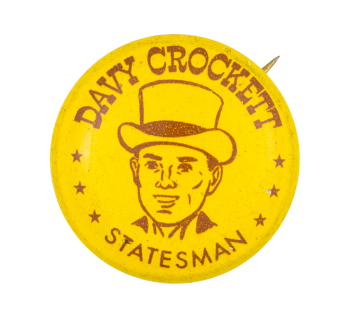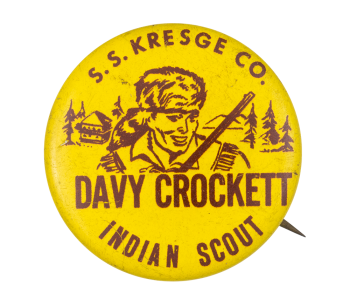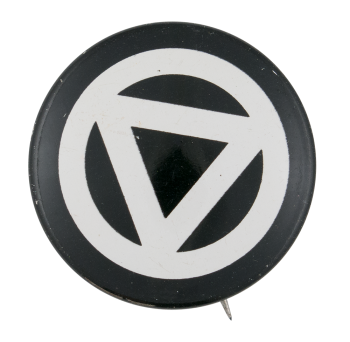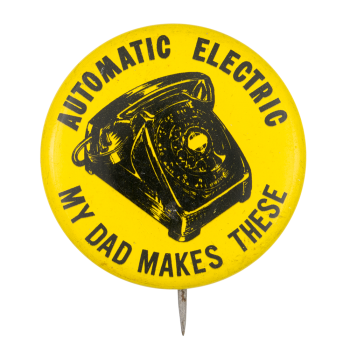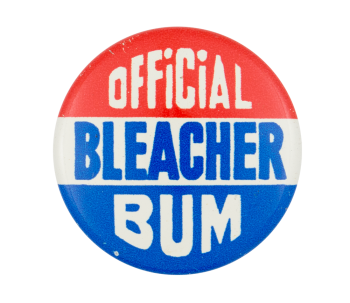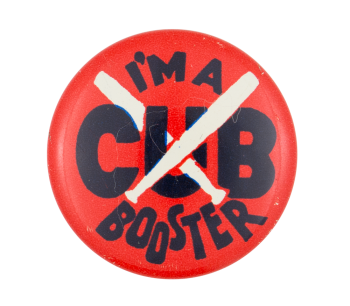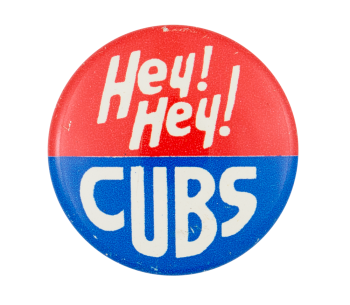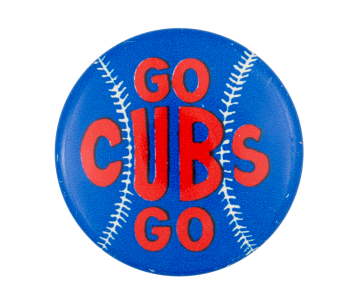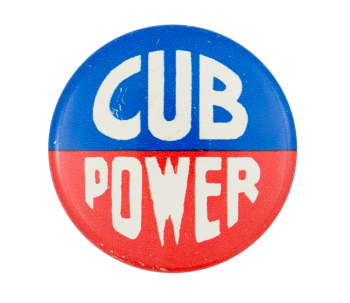Davy Crockett Statesman
| Category | |
|---|---|
| Additional Images | |
| Sub Categories | |
| Text on Button | DAVY CROCKETT STATESMAN |
| Image Description | Illustration of a man in a tall hat with brown text on a yellow background |
| Back Style | |
| The Shape | |
| The Size | |
| Year / Decade Made | |
| Additional Information | In 1954, Walt Disney Studios released a series of live-action adventures films centered around folk hero Davy Crockett, played by Fess Parker. The series included: Davy Crockett Indian Fighter, Davy Crockett Goes to Congress, Davy Crockett King of the Wild Frontier, and Davy Crockett at the Alamo. Davy Crockett, born in Tennessee, was an American politician, colonel, and folk hero from the 19th century. Crockett served in the militia in Tennessee before being elected to legislature in 1821. Following this election, Crockett became a member of the House of Representatives from 1827-1835, where he strongly opposed President Andrew Jackson's policies, especially the Indian Removal Act, and was part of the National Republican party, also known as the Anti-Jacksonian Party. Crockett was killed while fighting at the Battle of the Alamo in San Antonio Texas on March 1836 at the age of 49. After his death, Crockett gained a larger than life reputation due to plays, almanacs, and, in the 20th century, movies and television shows. because of this, he became known as the "King of the Wild Frontier" and an American folk hero. |
| Catalog ID | CL0388 |

